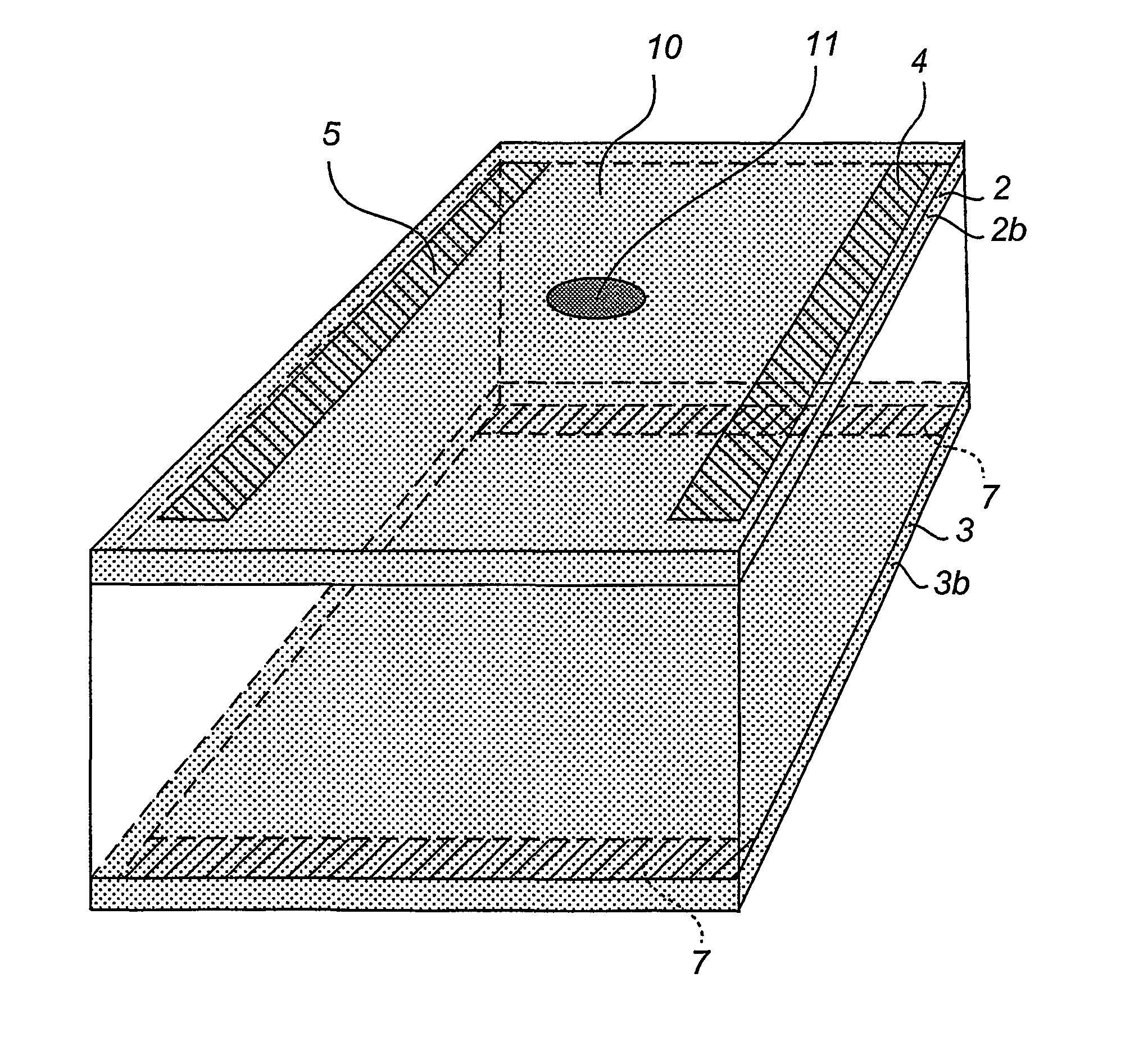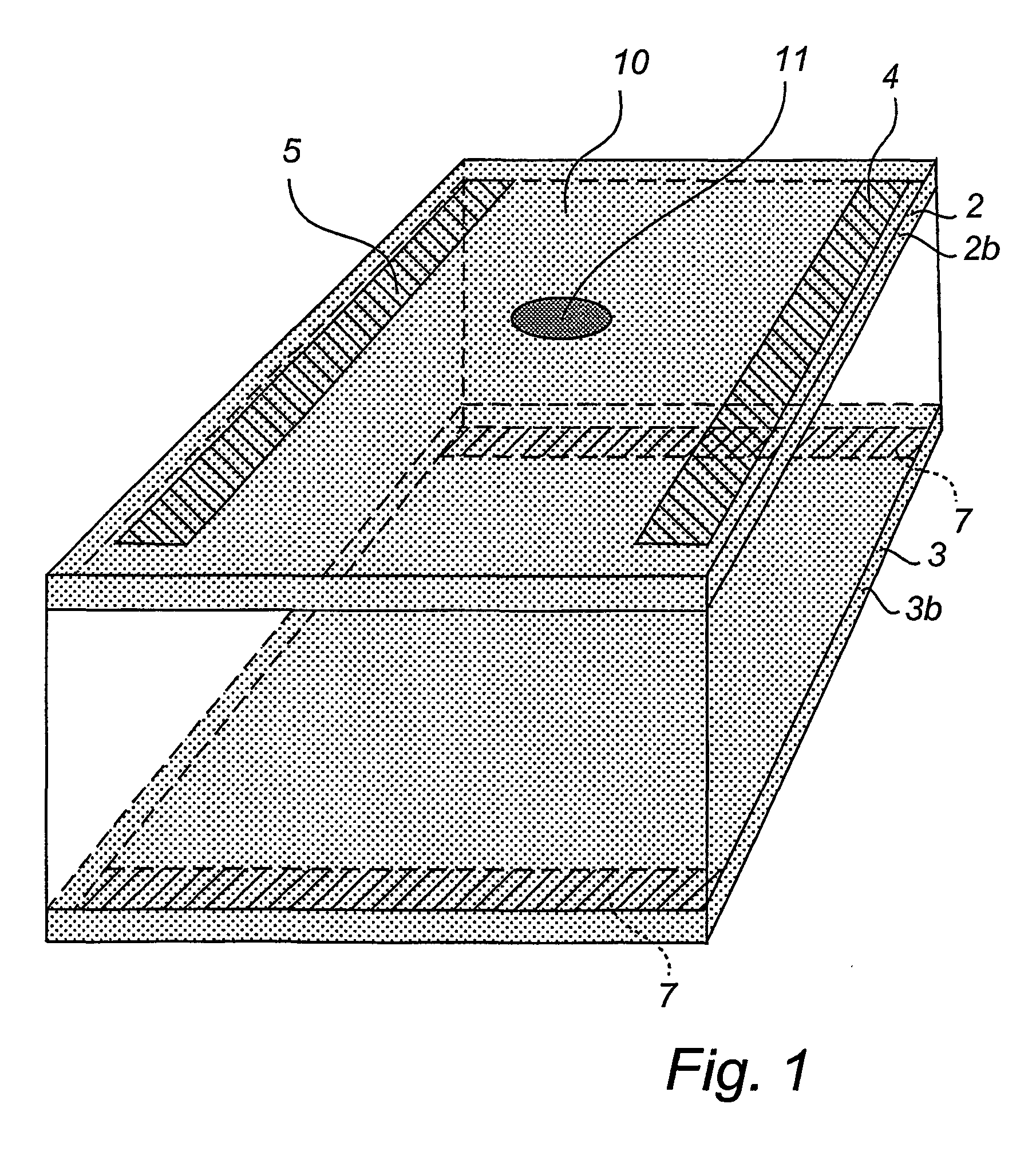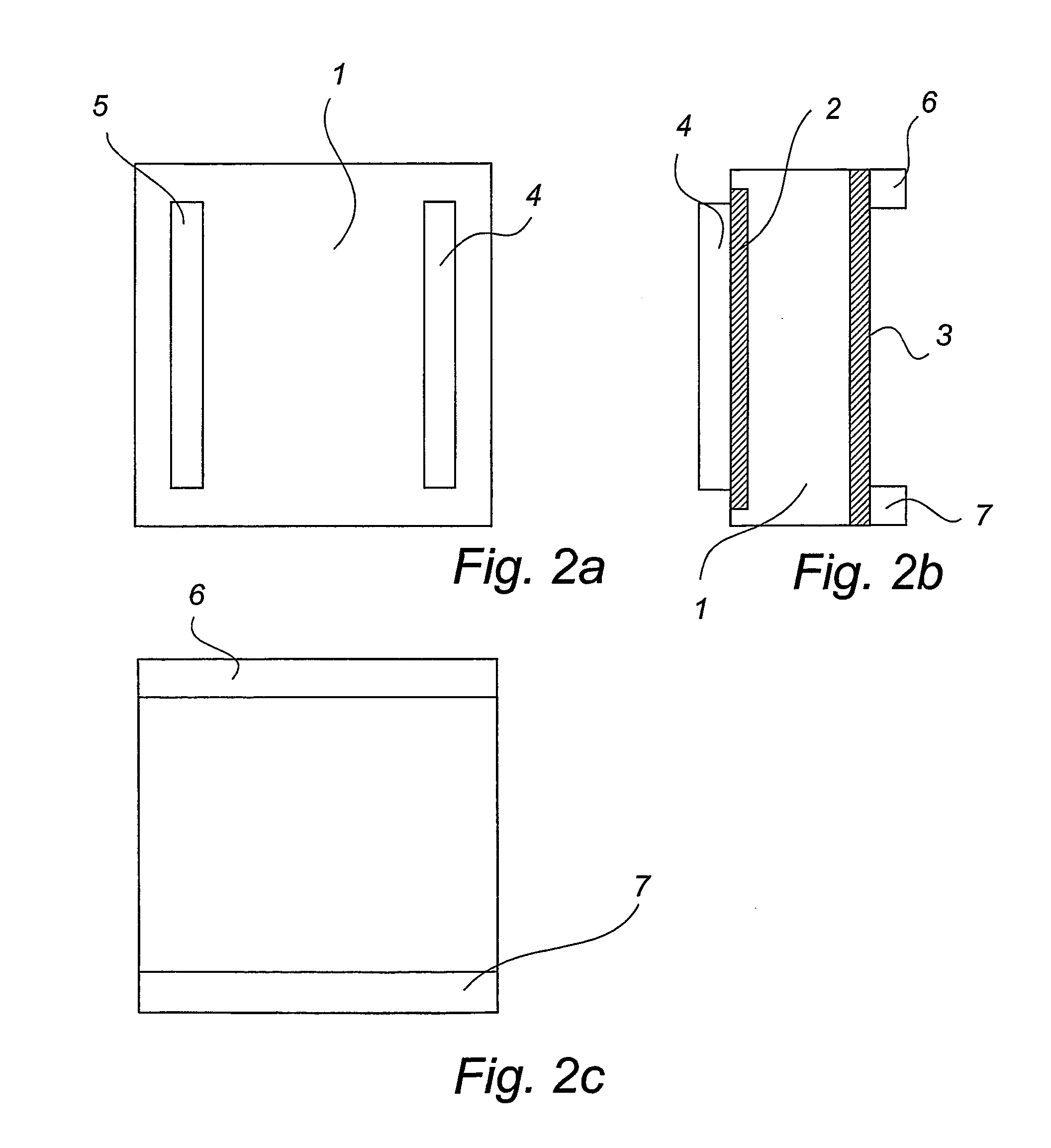Position sensitive photo detector
a photo detector and position sensitive technology, applied in the direction of measuring devices, instruments, electrical equipment, etc., can solve the problems of limited sensitivity, inability to use in very many applications, and inability to completely guarantee the type, so as to improve the electrical properties of transistors and the effect of changing the conductivity parameters
- Summary
- Abstract
- Description
- Claims
- Application Information
AI Technical Summary
Benefits of technology
Problems solved by technology
Method used
Image
Examples
first embodiment
[0022] the device according to the invention, as shown in FIGS. 1 and 2a-c, comprises a semiconductor wafer 1 of a conductivity type n or p with two conductive layers 2 and 3 on either side of the wafer obtained by means of doping. The conductivity type of the doped areas has been selected so as to be the opposite of that of the semiconductor wafer. If, for example, the wafer is of N-type, then the doping of the layer is of P-type. The inverse relation is also possible. In this way, the conductive layers will also constitute barrier layers. Pairs of electrodes 4 & 5 and 6 & 7 respectively are arranged on the conductive layers. The electrodes should be arranged two by two in parallel, and in such manner that each pair extends in a different direction, said direction being preferably perpendicular to that of the other pair. Furthermore, the electrodes are preferably so designed and arranged that each of the two pairs defines two opposite sides of an orthogonal square, which defines tw...
second embodiment
[0028] the device according to the invention, as shown in FIGS. 3 and 4a-c, comprises a semiconductor wafer 1 of a conductivity type n or p with a conductive layer 2 obtained by means of doping and of the opposite conductivity type to that of the base material of the wafer. This conductivity layer also forms, in the same way as described above, a barrier layer. In the same way as described above, a conductive layer 3 is arranged under the barrier layer. In this embodiment, however, the conductivity type of said layer is the same as that of the base material of the wafer. This layer may be formed of the base material of the wafer. In the same way as described above, electrodes 4, 5 and 6, 7 are arranged in contact with the conductive layers. The device according to this embodiment further comprises additional barrier layers 8 and 9, which are required to provide amplification and which are arranged under the electrodes arranged in contact with the conductive layer 3. These barrier la...
third embodiment
[0029] According to the invention, the additional barrier layers 8, 9 may alternatively be arranged under the electrodes arranged in contact with the conductive layer 2, as shown in FIG. 5 and FIGS. 6a-c.
[0030] In the same way as described above, the radiationgenerated current in the two latter embodiments will be amplified and divided, on the basis of which it is possible to determine the location of the irradiated point.
PUM
 Login to View More
Login to View More Abstract
Description
Claims
Application Information
 Login to View More
Login to View More - R&D
- Intellectual Property
- Life Sciences
- Materials
- Tech Scout
- Unparalleled Data Quality
- Higher Quality Content
- 60% Fewer Hallucinations
Browse by: Latest US Patents, China's latest patents, Technical Efficacy Thesaurus, Application Domain, Technology Topic, Popular Technical Reports.
© 2025 PatSnap. All rights reserved.Legal|Privacy policy|Modern Slavery Act Transparency Statement|Sitemap|About US| Contact US: help@patsnap.com



